 W
WThe 1874 Transit of Venus Expedition to Campbell Island was an astronomical expedition by French scientists to observe the 9 December 1874 transit of Venus on subantarctic Campbell Island in the Southern Ocean some 600 km south of New Zealand. It was one of several such scientific expeditions from various countries sent around the world to observe the rare astronomical event.
 W
WA Relation of a Voyage made in the Years 1695, 1696, 1697 on the Coasts of Africa, Streights of Magellan, Brasil, Cayenna, and the Antilles, by a Squadron of French Men of War, under the Command of M. de Gennes, written by François Froger, published in French and in English in 1698, relates the three years of travel of this young French explorer, engineer and hydrographer, who was nineteen years old at the date of departure. The author describes the colonies and harbors he visited, the people he met as well as the fruits, plants and animals he discovered.
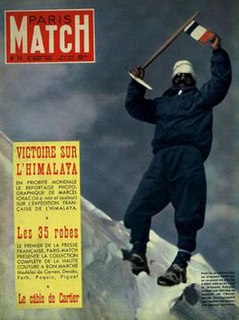 W
WThe 1950 French Annapurna expedition, led by Maurice Herzog, reached the summit of Annapurna I at 8,091 metres (26,545 ft), the highest peak in the Annapurna Massif. The mountain is in Nepal and the government had given permission for the expedition, the first time it had permitted mountaineering in over a century. After failing to climb Dhaulagiri I at 8,167 metres (26,795 ft), the higher peak nearby to the west, the team attempted Annapurna with Herzog and Louis Lachenal, reaching the summit on 3 June 1950. It was only with considerable help from their team that they were able to return alive, though with severe injuries following frostbite.
 W
WThe Bedaux expedition of 1934, also named the Bedaux Canadian Subarctic Expedition, was an attempt by eccentric French millionaire, Charles Eugène Bedaux, to cross the wilderness of the northern parts of Alberta and northern British Columbia in Canada, while making a film, testing Citroën half-track vehicles and generating publicity for himself.
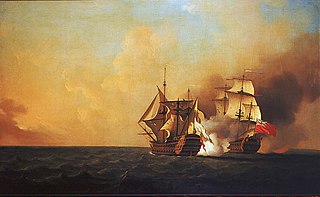 W
WThe Duc d'Anville expedition was sent from France to recapture Louisbourg and take peninsular Acadia. The expedition was the largest military force ever to set sail for the New World prior to the American Revolutionary War. This effort was the fourth and final French attempt to regain the Nova Scotian capital, Annapolis Royal, during King George's War. The Expedition was also supported on land by a force from Quebec under the command of Jean-Baptiste Nicolas Roch de Ramezay. Along with recapturing Acadia from the British, d'Anville was ordered to "consign Boston to flames, ravage New England and waste the British West Indies." News of the expedition spread fear throughout New York and New England.
 W
WThe French expedition to Ireland, known in French as the Expédition d'Irlande, was an unsuccessful attempt by the French Republic to assist the outlawed Society of United Irishmen, a popular rebel Irish republican group, in their planned rebellion against British rule during the French Revolutionary Wars. The French intended to land a large expeditionary force in Ireland during the winter of 1796–1797 which would join with the United Irishmen and drive the British out of Ireland. The French anticipated that this would be a major blow to British morale, prestige and military effectiveness, and was also intended to possibly be the first stage of an eventual invasion of Britain itself. To this end, the Directory gathered a force of approximately 15,000 soldiers at Brest under General Lazare Hoche during late 1796, in readiness for a major landing at Bantry Bay in December.
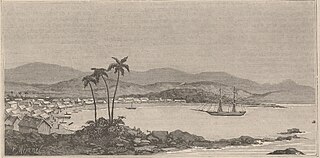 W
WThe First Madagascar expedition was the beginning of the Franco-Hova War and consisted of a French military expedition against the Merina Kingdom on the island of Madagascar in 1883. It was followed by the Second Madagascar expedition in 1895.
 W
WThe first voyage of Kerguelen was an expedition of the French Navy to the southern Indian Ocean conducted by the fluyts Fortune and Gros Ventre, under Lieutenant Yves-Joseph de Kerguelen-Trémarec. The aims of the expedition were to survey recently discovered sea routes between Isle de France and India, to seek the postulated Terra Australis Incognita, and to explore Australia.
 W
WThe French Geodesic Mission to Lapland was one of the two French Geodesic Mission carried out in 1736–1737 by the French Academy of Sciences for measuring the shape of the Earth. One expedition was sent to Ecuador to perform measurements near the Equator, another one was sent to Meänmaa to perform measurements near the Arctic Circle.
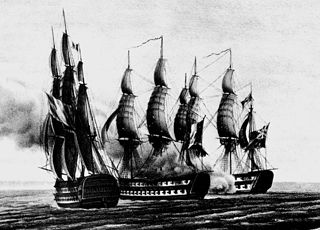 W
WGanteaume's expeditions of 1801 were three connected major French Navy operations of the spring of 1801 during the French Revolutionary Wars. A French naval squadron from Brest under Contre-amiral Honoré Ganteaume, seeking to reinforce the besieged French garrison in Egypt, made three separate but futile efforts to reach the Eastern Mediterranean. The French army in Egypt had been trapped there shortly after the start of the Napoleonic campaign in Egypt in 1798, when the French Mediterranean Fleet was destroyed at the Battle of the Nile. Since that defeat, the French Navy had maintained only a minimal presence in the Mediterranean Sea, while the more numerous British and their allies had succeeded in blockading and defeating several French bases almost unopposed.
 W
WThe Hudson Bay expedition of 1686 was one of the Anglo-French conflicts on Hudson Bay. It was the first of several expeditions sent from New France against the trading outposts of the Hudson's Bay Company in the southern reaches of Hudson Bay. Led by the Chevalier de Troyes, the expedition captured the outposts at Moose Factory, Rupert House, Fort Albany, and the company ship Craven.
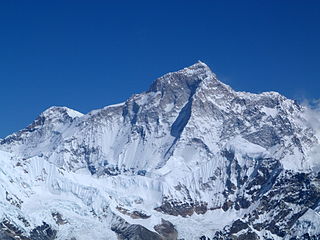 W
WThe 1955 French Makalu expedition was the first to successfully climb Makalu, the Himalayan mountain 12 miles (19 km) to the southeast of Mount Everest, on the border between Nepal and Tibet. At 8,485 metres (27,838 ft) Makalu is the fifth-highest mountain in the world and an eight-thousander.
 W
WThe Morea expedition is the name given to the land intervention of the French Army in the Peloponnese between 1828 and 1833, at the time of the Greek War of Independence, with the aim of expelling from the region the Ottoman-Egyptian occupation forces. It was also accompanied by a scientific expedition mandated by the French Academy.
 W
WThe Newfoundland expedition was a series of fleet manoeuvres and amphibious landings in the coasts of Newfoundland, Labrador and Saint Pierre and Miquelon carried out by the combined French and Spanish fleets during the French Revolutionary Wars. This expedition, composed of seven ships of the line and three frigates under the orders of Rear-Admiral Richery sailed from Cadiz in August 1796 accompanied by a much stronger Spanish squadron, commanded by General Solano, which had the aim of escorting it to the coast of Newfoundland.
 W
WThe Saint-Domingue expedition was a French military expedition sent by Napoleon Bonaparte, then First Consul, under his brother-in-law Charles Victor Emmanuel Leclerc in an attempt to regain French control of the Caribbean colony of Saint-Domingue on the island of Hispaniola, and curtail the measures of independence taken by the former slave Toussaint Louverture. It departed in December 1801 and, after initial success, ended in a French defeat at the battle of Vertières and the departure of French troops in December 1803. The defeat ended forever Napoleon's dreams of a French empire in the West.
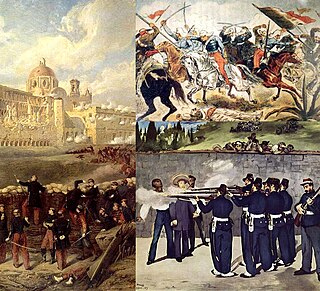 W
WThe Second French Intervention in Mexico, 1861–1867; was an invasion of Mexico, launched in late 1861, by the Second French Empire (1852–1870), aiming to establish in Mexico a regime favorable to French interests.
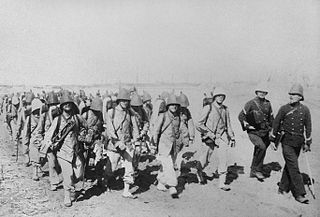 W
WThe Second Madagascar expedition was a French military intervention which took place in 1894–95, sealing the conquest of the Merina Kingdom on the island of Madagascar by France. It was the last phase of the Franco-Hova War and followed the First Madagascar expedition of 1883–85.
 W
WThe Yellow Expedition was a French trans-Asian expedition in 1931/1932. It was organized by Citroën in order to promote their P17 Kégresse track vehicles. The expedition started in Beirut, the capital of French Lebanon. Georges-Marie Haardt and Louis Audouin-Dubreuil led the cruise. Haardt had already crossed the Sahara and the whole African continent in two ambitious expeditions.